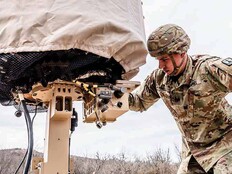RPA Aids DLA Acquisition and Much More
RPA has proven especially useful during the pandemic. The DLA’s acquisitions team currently receives hundreds of notifications for what are known as “post-award requests,” or electronic requests for administrative action or information on a contract award.
Those include supplier notes, comments and other information that needs to be reported to supply chain leaders for review and then provided to contract support personnel.
“Gathering all of that stuff manually in the volumes that you see under a pandemic condition, you can’t get there from here, but the bots actually enable that,” Wood says. “It’s a bot doing that sort of workflow that helped close the gap and ensure delivery in spite of the spikes.”
The DLA started its RPA program in April 2018, and in the roughly three years since, the program has evolved a great deal, Wood says. RPA bots help with a wide range of tasks.
That includes reconciliation, or processes of comparing data from multiple systems to look for discrepancies and errors. Another is transaction processing, or updating sales orders and invoices. Yet another is compliance, such as responding to Freedom of Information Act requests. RPA also helps the DLA generate cyclical reports that need to be updated in very mandated ways.
Additionally, RPA helps with data extraction — collecting it from multiple sources, persisting the data and then taking an action that adds value to the data, Wood says.
RPA also helps with audit support, Wood says, which happens annually. “If you have information systems touching finance systems, that’s very auditable stuff,” he says. “So, you need to provide evidentiary matter at the request of the auditors. When things are manual, you’re stopping your day job — which, quite frankly, is supporting our war fighters.” RPA bots grab that evidentiary matter quickly and deliver it to auditors.
VIDEO: What are the seldomly asked questions around emerging tech?
How the DLA Is Evolving Its Use of RPA
RPA is also growing more complex within the DLA. Now, the RPA program is working with process managers to identify “border processes” or leading and trailing processes so that the agency can start “chaining processes end to end and increasing the sophistication and complexity of our particular automations,” Wood says.











